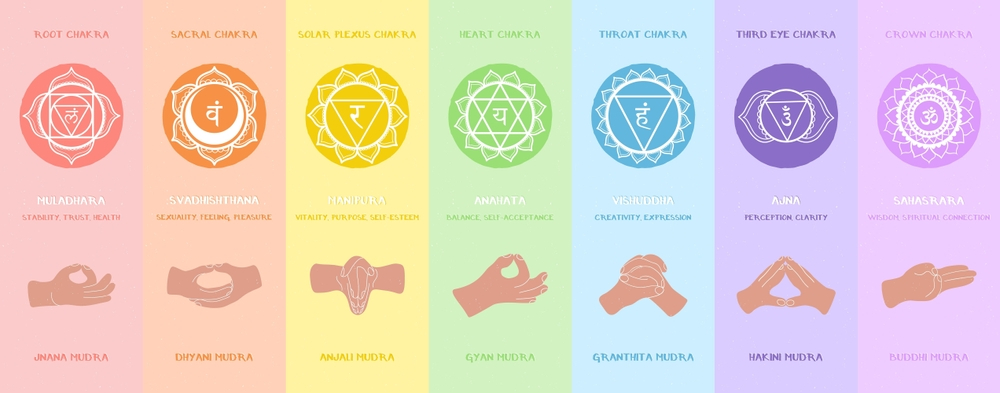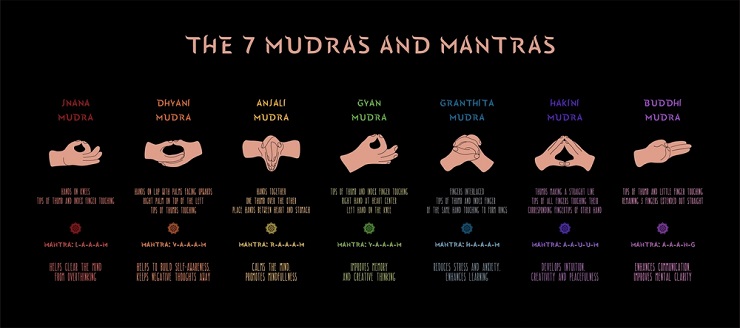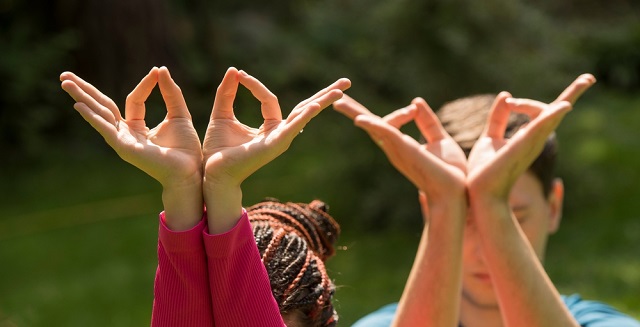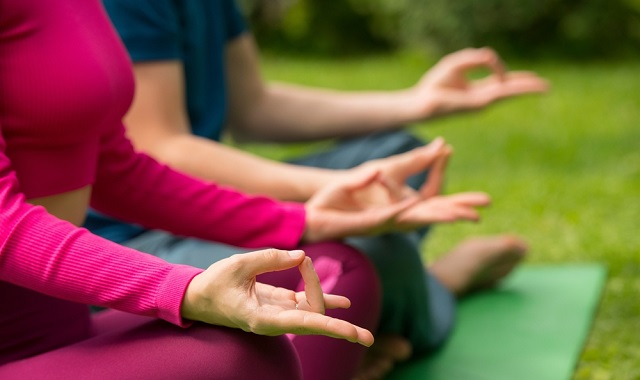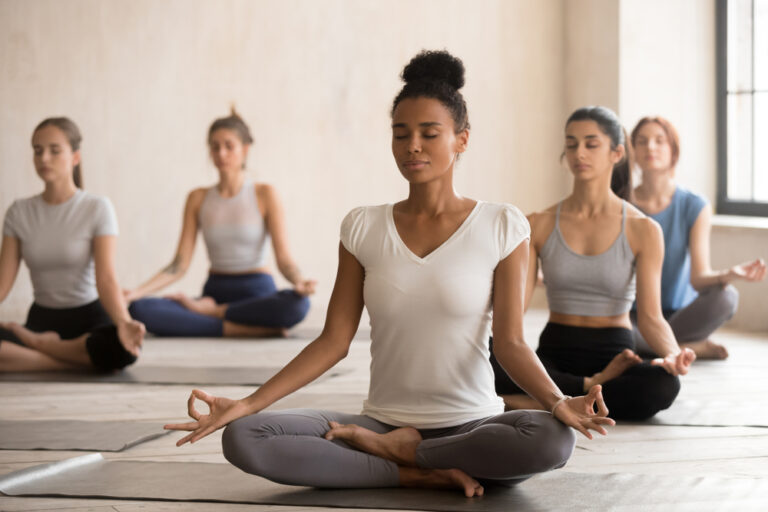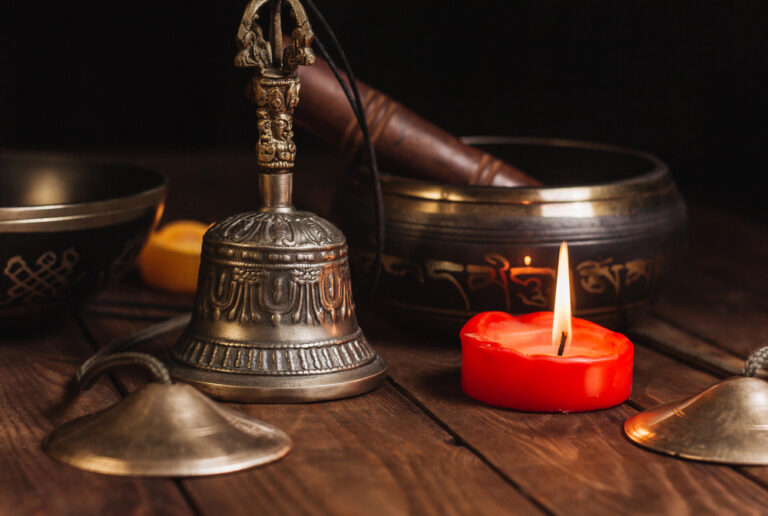Meditation Hand Gestures: A Comprehensive Guide
Meditation, an ancient practice transcending cultures and religions, has evolved over centuries, adapting various techniques to enhance effectiveness. Meditation hand gestures, or mudras, hold a special place among these techniques. These gestures are symbolic and powerful tools that can deepen and amplify the meditative experience. This comprehensive guide will explore the rich history, significance, and application of meditation hand gestures.
Mudras, derived from the Sanskrit word “seal” or “gesture,” involve specific positioning of the fingers, hands, and body to channel energy and influence the flow of prana, or life force. Understanding the profound impact of these hand gestures can elevate your meditation practice to new heights.
As we embark on this exploration, it’s essential to recognize the universality of mudras across various spiritual traditions, from Hinduism and Buddhism to yoga and beyond. Each tradition has its unique gestures, reflecting a deep understanding of the mind-body connection.
In the following sections, we will delve into meditation hand gestures’ origins, symbolism, and practical applications. We’ll explore how different mudras can address specific mental and physical challenges, offering a holistic approach to well-being.
Join us on this enlightening journey as we unlock the secrets of meditation hand gestures, empowering you to integrate these powerful tools into your practice. Whether you’re a seasoned meditator or a beginner seeking to enhance your experience, this guide will provide valuable insights into the transformative potential of meditation hand gestures. Get ready to embark on a path of self-discovery and inner harmony through the art and science of mudras.
The Importance of Hand Gestures in Meditation
Meditation, often associated with stillness and inner contemplation, takes on a dynamic dimension when paired with intentional hand gestures or mudras. The significance of these gestures in meditation goes beyond mere symbolism; they play a crucial role in harnessing the subtle energies within the body and mind.
Connecting Mind and Body
The human body is a complex network of energy channels, and mudras act as bridges that connect these channels, facilitating the smooth flow of energy. By assuming specific hand positions, practitioners can stimulate different brain areas and influence the balance of energy throughout the body.
Enhancing Concentration
Mudras anchor the wandering mind, providing a tangible focus point during meditation. The intentional placement of hands allows individuals to concentrate their mental energy, fostering a deep sense of awareness and mindfulness. This heightened concentration, in turn, leads to a more profound meditative experience.
Balancing Energies
In the ancient traditions of yoga and Ayurveda, the body is believed to be composed of various elements and energies. Mudras aid in balancing these energies, promoting physical and mental harmony. Whether it’s reducing stress, calming the nervous system, or invigorating the senses, different hand gestures cater to specific needs, making meditation a versatile practice.
Expressing Inner States
Hand gestures in meditation also serve as a means of self-expression. Just as body language conveys emotions daily, mudras express internal states during meditation. The positioning of the hands becomes a non-verbal language that communicates with the deeper layers of the psyche, allowing individuals to tap into their emotions and experiences.
Cultural and Spiritual Significance
Across cultures and spiritual traditions, the use of hand gestures in meditation holds profound symbolic meaning. These gestures often reflect the principles and values of a particular tradition, creating a bridge between the individual and the spiritual context in which they practice.
The importance of hand gestures in meditation extends beyond the physical realm. By incorporating mudras into your practice, you open a gateway to a more profound and transformative meditation experience. Whether you seek concentration, balance, or a deeper connection to your spiritual journey, the intentional use of hand gestures can be a powerful ally on your path to self-discovery and inner peace.
Exploring the Different Types of Hand Gestures in Meditation
Meditation, a practice celebrated for its versatility, embraces diverse techniques, each designed to deepen the connection between mind, body, and spirit. The various hand gestures, or mudras, are central to this exploration, which bring a unique dimension to the meditative experience. In this segment, we delve into meditation hand gestures, exploring their distinct types and their specific benefits.
1. Anjali Mudra (Namaste Gesture)
Commonly recognized as the Namaste gesture, Anjali Mudra involves bringing the palms together in a prayer-like position at the heart centre. This gesture symbolizes respect, gratitude, and acknowledging the divine within oneself and others. Anjali Mudra is often used at the beginning and end of meditation sessions to cultivate a sense of unity and connection.
2. Gyan Mudra (Wisdom Gesture)
Gyan Mudra involves touching the tip of the index finger to the tip of the thumb, forming a circle, while keeping the other three fingers extended. This mudra is associated with wisdom, knowledge, and the expansion of consciousness. It is believed to stimulate the air element and enhance concentration, making it popular for those seeking clarity and insight during meditation.
3. Chin Mudra (Consciousness Gesture)
Chin Mudra is formed by joining the tips of the thumb and index finger, with the other three fingers extended. This gesture represents the connection between individual consciousness and universal consciousness. Practicing Chin Mudra is thought to bring about a meditative state, promoting inner peace, and aligning the practitioner with higher states of awareness.
4. Dhyana Mudra (Meditation Gesture)
Dhyana Mudra involves placing the hands on the lap, right hand resting on the left, with the thumbs lightly touching, forming a triangle. This gesture encourages deep concentration and contemplation, making it an ideal choice for meditation. Dhyana Mudra helps calm the mind and supports the journey into a tranquil and focused state of awareness.
5. Hakini Mudra (Concentration Gesture)
Hakini Mudra is performed by touching the fingertips of both hands together, creating a steeple-like shape. This mudra is associated with enhancing memory, concentration, and cognitive abilities. By directing energy towards the brain, Hakini Mudra is a valuable tool for those seeking mental clarity and increased focus during meditation.
Incorporating these hand gestures into your meditation practice can bring a transformative dimension, catering to various aspects of well-being. Experimenting with different mudras allows practitioners to tailor their meditation experience, fostering a deeper connection with the self and the profound energies that permeate the meditative journey.
How to Practice Meditation Hand Gestures Properly
Meditation hand gestures, or mudras, add a dynamic and transformative layer to the timeless art of meditation. While these gestures are deeply rooted in tradition and symbolism, mastering their proper execution can significantly enhance your meditative experience. This guide explores the steps to practice meditation hand gestures effectively.
1. Choose a Comfortable Meditation Posture
Before delving into specific mudras, ensure you are seated comfortably in a meditation posture that suits you. Whether sitting cross-legged on the floor, using a cushion, or sitting on a chair with your feet flat on the ground, find a position that allows you to maintain a straight spine and relaxed posture.
2. Cultivate Mindful Awareness
Begin your meditation session by cultivating mindful awareness. Inhale deeply several times to anchor yourself and redirect your focus to the current moment. This initial step sets the foundation for a focused and intentional practice.
3. Understand the Mudra’s Meaning
Each mudra carries a unique meaning and purpose. Before incorporating a specific hand gesture into your meditation, take a moment to understand its symbolism and its benefits. Knowing the intention behind the mudra enhances your connection to the practice.
4. Focus on Breath Awareness
Once you’ve chosen a mudra, intertwine its practice with breath awareness. Inhale and exhale deeply, syncing the movement of your hands with the natural rhythm of your breath. This synchronization helps create a harmonious flow of energy throughout the body.
5. Maintain Gentle and Relaxed Hands
Avoid tension in your hands and fingers. Maintain a gentle and relaxed posture for your hands, allowing the energy to flow freely. The goal is not to exert force but to embody a sense of ease and receptivity.
6. Align Mudras with Intention
As you settle into your meditation, align the mudra with your specific intention for the session. Infuse the mudra with your desired purpose, whether seeking clarity, inner peace, or heightened awareness. This intentional alignment deepens the connection between the physical gesture and your inner state.
7. Gradual Incorporation and Exploration
Gradually incorporate one or two mudras into your meditation practice as a beginner. Explore how each mudra influences your experience, and be open to adjusting your approach based on personal preferences and insights.
8. Regular Practice and Patience
Like any aspect of meditation, mastering mudras requires regular practice and patience. Consistency allows you to understand better the gestures and their impact on your overall well-being.
Following these steps, you can seamlessly integrate meditation hand gestures into your practice, unlocking their transformative potential. Remember that the journey of meditation is personal, and the proper execution of mudras adds a unique and enriching dimension to your path of self-discovery.
The Benefits of Incorporating Hand Gestures into Your Meditation Practice
Meditation, a journey inward to discover inner peace and harmony, takes on new dimensions with the addition of intentional hand gestures or mudras. These ancient practices, rooted in diverse spiritual traditions, benefit those who incorporate them into their meditation routines. This exploration reveals the profound advantages of integrating hand gestures into meditation.
1. Enhanced Concentration
One of the primary benefits of incorporating hand gestures is enhancing concentration. Mudras serve as focal points, directing the mind away from distractions and towards a specific focus point. This heightened concentration deepens the meditative experience, allowing practitioners to access inner stillness and clarity.
2. Balancing Energies
Mudras are designed to stimulate and balance the body’s energy flow. Practitioners can influence subtle energies by adopting specific hand positions, promoting harmony and balance. This balance extends beyond the physical body to include emotional and mental states, fostering holistic well-being.
3. Stress Reduction
Stress has emerged as a widespread challenge in today’s swiftly moving contemporary society. Meditation hand gestures offer a tangible and effective tool for stress reduction. Specific mudras, such as the Gyan Mudra, are known to calm the nervous system, promoting a sense of tranquillity and relaxation.
4. Emotional Regulation
Our hands are intricately connected to the neural circuits in the brain. As such, the intentional movement and positioning of hands in mudras can influence emotional states. Specific gestures enable practitioners to regulate emotions, promoting a more balanced and centered emotional experience.
5. Deepened Spiritual Connection
Many meditation hand gestures carry profound spiritual symbolism. By engaging with these symbols, practitioners can deepen their spiritual connection and foster a sense of reverence. The Anjali Mudra, for instance, signifies the recognition of the divine within and around us, fostering a sacred and connected space.
6. Mind-Body Integration
Mudras bridge the gap between the mind and body, facilitating a deeper integration of these two aspects of self. The intentional movement of hands creates a feedback loop between the physical and mental realms, reinforcing the mind-body connection. This integration contributes to a more holistic and grounded meditation experience.
7. Personalized Meditation Experience
The diversity of mudras allows individuals to tailor their meditation practice to address specific needs and goals. Whether seeking mental clarity, emotional balance, or spiritual growth, practitioners can choose mudras that resonate with their intentions, creating a personalized and enriching meditation experience.
The benefits of incorporating hand gestures into your meditation practice extend far beyond the physical realm. As you explore the rich tapestry of mudras, you open the door to a transformative journey within, marked by enhanced concentration, emotional well-being, and a deeper connection to the profound energies that guide us toward inner peace.
Tips and Techniques for Mastering Meditation Hand Gestures
Mastering meditation hand gestures, or mudras, involves a blend of mindfulness, intention, and practice. As these ancient techniques play a pivotal role in enhancing your meditation experience, here are some tips and techniques to help you navigate the path toward mastery:
1. Start with Basic Mudras
Starting with fundamental mudras such as Anjali Mudra (Namaste Gesture) or Gyan Mudra (Wisdom Gesture) is advisable for beginners. Begin incorporating these gestures into your meditation practice to acquaint yourself with the subtle movements and energy shifts associated with each.
2. Cultivate Mindful Awareness
Mindful awareness is vital to mastering meditation hand gestures. Pay attention to the sensations in your hands and fingers as you perform a mudra. Observe how each gesture influences your breath and overall state of being. Mindful awareness enhances the connection between body and mind during the practice.
3. Understand the Symbolism
Take the time to understand the symbolism behind each mudra. Knowing the cultural, spiritual, or elemental significance adds depth to your practice. This understanding helps you align the mudra with specific intentions, creating a more meaningful and purposeful experience.
4. Combine Mudras with Breathwork
Integrate mudras seamlessly with breathwork to amplify their impact. Coordinate the movements of your hands with your breath, syncing inhalations and exhalations. This synchronization enhances concentration and promotes a rhythmic energy flow throughout your meditation session.
5. Experiment with Visualization
Incorporate visualization techniques to deepen your connection with mudras. As you assume a particular hand gesture, visualize the energy flow associated with that mudra. Picture the intended outcome, whether inner peace, clarity, or spiritual connection. Visualization adds a powerful dimension to the practice.
6. Regular Practice is Key
Mastery comes with consistent practice. Dedicate time to incorporate meditation hand gestures into your sessions regularly. Consistency allows you to become more attuned to the subtle nuances of each mudra and deepens your overall understanding of their effects.
7. Seek Guidance and Resources
Explore resources such as books, videos, or guided meditations that provide insights into mudras and their applications. Seeking guidance from experienced practitioners or teachers can offer valuable tips and corrections, ensuring that you are performing the gestures correctly.
8. Listen to Your Body
Pay attention to how your body responds to each mudra. If you experience discomfort or strain, consider adjusting the hand position to suit your body better. Listening to your body’s cues ensures a comfortable and sustainable practice.
9. Gradual Progression
Gradually explore more advanced gestures as you become more proficient in basic mudras. Each mudra has its unique benefits, and progressing at your own pace allows for a more fulfilling and evolving meditation practice.
10. Reflect on Your Experience
Following each meditation session, pause to contemplate your experience. Consider the impact of the mudra on your mental, emotional, and spiritual well-being. This reflective practice deepens your awareness and fosters continuous growth.
Mastering meditation hand gestures is a journey that combines intention, awareness, and regular practice. By incorporating these tips and techniques into your routine, you can unlock the transformative potential of mudras, enriching your meditation practice and fostering a deeper connection with your inner self.
Common Mistakes to Avoid when Using Hand Gestures in Meditation
Meditation Hand gestures, or mudras, are potent tools that can elevate your meditation practice. However, like any skill, mastering mudras requires awareness and practice. To ensure a fruitful meditation experience, it’s crucial to be mindful of common mistakes practitioners often make when using hand gestures. Here are key pitfalls to avoid:
1. Lack of Mindful Awareness
One of the primary mistakes is practicing mudras without mindful awareness. Rushing through gestures or performing them mechanically can diminish their effectiveness. Take the time to cultivate a mindful presence, paying attention to the sensations and the energy flow associated with each mudra.
2. Incorrect Hand Positions
Precise hand positioning is paramount in mudra practice. Minor adjustments can significantly impact the flow of energy. Avoid common errors such as excessive tension in the hands or misalignment of fingers. Regularly refer to reliable sources or seek guidance to ensure correct hand positions.
3. Forceful Gestures
Mudras are meant to be gentle and relaxed. Applying excessive force to create a mudra contradicts their purpose. Tension in the hands can hinder the natural flow of energy. Practice with a light touch, allowing the energy to move freely throughout your hands and body.
4. Ignoring Individual Needs
Every individual is unique, and so are their energy levels and sensitivities. Avoid assuming that a particular mudra will have the same effect on everyone. Pay attention to how your body responds and be open to adapting or choosing mudras that align with your needs and goals.
5. Neglecting Breath Coordination
A common oversight is disconnecting mudra practice from breathwork. The synergy between hand gestures and breath enhances the overall meditation experience. Ensure that your mudra movements align seamlessly with your breath, creating a harmonious rhythm that deepens your meditative state.
6. Overlooking Mudra Intentions
Each mudra carries specific intentions and benefits. Overlooking the symbolic or spiritual significance of a mudra can limit its impact. Take the time to understand the purpose behind each gesture, aligning your practice with the intended outcome for a more meaningful experience.
7. Lack of Consistency
Consistency is key in mastering meditation hand gestures. Infrequent or sporadic practice can hinder your progress. Establish a routine for incorporating mudras into your meditation sessions to build familiarity and deepen your connection with these powerful tools.
8. Failure to Seek Guidance
Mudras, with their rich history and symbolism, can be intricate. Avoid the mistake of not seeking guidance when needed. Books, videos, or guidance from experienced practitioners can provide valuable insights and corrections, preventing the reinforcement of incorrect practices.
9. Striving for Perfection
While precision is essential, striving for perfection can create unnecessary pressure. Remember that the journey of mastering mudras is gradual. Embrace the learning process, be patient with yourself, and celebrate minor improvements.
10. Disregarding Physical Comfort
Disregarding physical comfort during mudra practice is a common pitfall. Ensure that your chosen meditation posture and mudra are sustainable for the duration of your session. Adjust your position to avoid discomfort and promote a relaxed state of being.
By avoiding these common mistakes, you can enhance the effectiveness of meditation hand gestures and enjoy a more profound and fulfilling meditation experience. Mindful practice, consistency, and a willingness to adapt will contribute to successfully integrating mudras into your meditation routine.
Enhancing Your Meditation Experience with Hand Gestures: A Step-by-Step Guide
Meditation, a timeless practice revered for bringing inner peace and heightened awareness, can be enriched by incorporating intentional hand gestures or mudras. These ancient techniques provide a tangible means of channelling energy and intention during meditation. This step-by-step guide explores how to enhance your meditation experience with hand gestures.
Step 1: Set the Intention
Begin your meditation practice by setting a clear intention. Whether cultivating inner peace, gaining insight, or fostering emotional balance, having a specific purpose enhances the effectiveness of hand gestures. This intention will guide your choice of mudra for the session.
Step 2: Choose the Right Mudra
Select a mudra that aligns with your intention. Different mudras carry unique symbolism and benefits. For instance, Gyan Mudra may be suitable if you seek mental clarity, while Anjali Mudra can enhance a sense of connection and gratitude. Understand the purpose of the mudra to harmonize it with your intention.
Step 3: Establish a Comfortable Posture
Find a comfortable meditation posture that maintains a straight spine and relaxed demeanour. Whether seated on the floor or in a chair, ensure your posture supports a sense of groundedness and openness. Comfort contributes to a more focused and enjoyable meditation experience.
Step 4: Center Yourself with Breath
Take a few moments to center yourself through conscious breathing. Inhale deeply, fill your lungs, and exhale slowly, releasing tension. Centring your breath creates a foundation for the synchronization of hand gestures with the natural rhythm of your breath.
Step 5: Initiate the Mudra
With a focused mind and centred breath, initiate the chosen mudra. Follow the specific hand positions associated with the mudra, paying attention to the placement of fingers and the overall posture of your hands. Ensure a gentle and relaxed grip, allowing energy to flow freely.
Step 6: Coordinate with Breathwork
Sync the mudra with your breath. Inhale and exhale rhythmically, allowing the movement of your hands to align seamlessly with each breath cycle. This coordination enhances the flow of energy and concentration, deepening the meditative experience.
Step 7: Visualize the Outcome
As you hold the mudra, visualize the intended outcome associated with your chosen gesture. Whether it’s a sense of peace, clarity, or connection, envision the energy flowing through your hands and permeating your entire being. Visualization adds a potent layer to the practice.
Step 8: Maintain Presence and Awareness
Throughout your meditation, maintain mindful awareness. Be present with the sensations in your hands, the rhythm of your breath, and the visualization of your intention. This heightened awareness fosters a deeper connection with the mudra and its transformative potential.
Step 9: Reflect and Conclude
As your meditation session concludes, take a few moments to reflect on your experience. Consider the impact of the mudra on your mental, emotional, and spiritual well-being. Acknowledge any insights or shifts in energy that may have occurred during the practice.
Step 10: Explore and Evolve
Experiment with different mudras over time to diversify your meditation experience. Each mudra offers a unique perspective and set of benefits. Be open to exploration and evolution, adapting your practice to meet your evolving needs and goals.
Following these steps, you can seamlessly integrate hand gestures into your meditation practice, unlocking their transformative potential and enhancing your journey toward inner peace and self-discovery.
Conclusion
In meditation, incorporating hand gestures, or mudras, is a potent means to unlock inner peace and tranquillity. These intentional movements transcend mere symbolism, becoming conduits for a deeper connection with the self and the subtle energies that shape our meditative journey.
From the Namaste gesture’s resonance of unity to the Wisdom Gesture’s pursuit of knowledge, mudras offer a diverse palette for cultivating well-being. The synergy between these hand movements and mindful breathwork creates a rhythmic dance propels us into heightened awareness and stillness.
Steering clear of common pitfalls, such as mindless execution or forceful gestures, ensures that our journey with mudras remains a gentle and transformative experience. Consistency in practice and an open spirit of exploration integrate these gestures seamlessly into our meditation routines.
As we harness the intrinsic power of meditation hand gestures, we embark on a personal odyssey toward self-discovery and tranquillity. The intentional intertwining of breath, movement, and visualization transforms our hands into instruments of inner harmony. With each practised gesture, we draw closer to a life imbued with serenity—a serene existence not confined to our meditation cushions but one that resonates in every facet of our daily lives.

